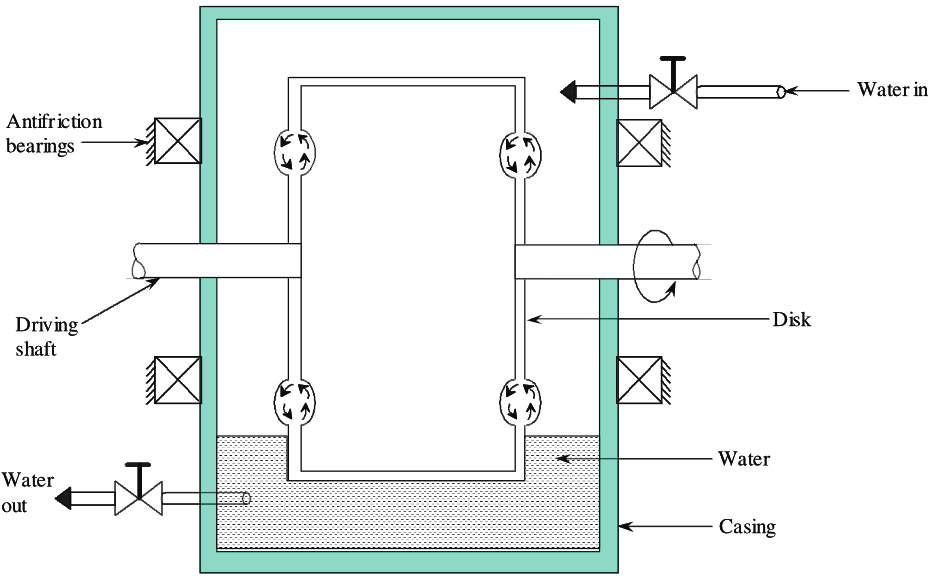Hydraulic dynamometer is an absorption type of dynamometer. This dynamometer uses fluid friction for their operation i.e., to dissipate mechanical energy. Therefore, it is also known as fluid friction dynamometer.
Construction of Hydraulic Dynamometer
A hydraulic dynamometer contains a rotating disk that is attached to the driving shaft of the test machine. The disk has semi elliptical grooves which allow water steam to flow through them. A stationary casing mounted on antifriction bearings (also known as trunnion). It has a braking arm and a balance system is fixed to it so as to make the casing rotate freely. However, this movement is restricted by the braking arm. Same as the rotating disk the casing also contains semi-elliptical grooves (recesses) on it. These two elements are arranged such that the rotating disk rotates inside the casing. The schematic of hydraulic dynamometer is shown in figure 1.

Figure 1: Hydraulic Dynamometer
The semi-elliptical grooves of the disk match with the corresponding semi-elliptical recesses of the casing. Therefore, a chamber is formed through which liquid flow is maintained. As the driving shaft of the prime mover rotates the liquid follows a helical path in the chamber which causes vortices and eddy currents to develop in the liquid which inturn causes the casing of the dynamometer to rotate in the direction of the shaft.
The braking action is varied and controlled either by changing the distance between the casing and disk or by changing the amount of water and its pressure. The power absorption is maximum if the casing is full and is minimiun if the amount of liquid is minimum. The total power absorption of this device changes approximately as,
- Cube of rotational speed
- Fifth power of rotating disk diameter.
The absorbing element contains a force sensing element such as load cell placed at the end of the arm/whose radius is ‘r’. Therefore the exerted torque is given by,
Torque (T) = F × r
Where,
F — Force measured at radius r and
Power is given by
P=2πT
Advantages of Hydraulic Dynamometer
The hydraulic or water vortex dynamometer is more popular because of the following reasons Advantages).
- It does not require any external cooling arrangement because water itself serves as coolant.
- It has high absorption capacity even in a small space.
- The instrument can be protected from hunting effects if it is provided with dashpot-damper system.
- It is economical.